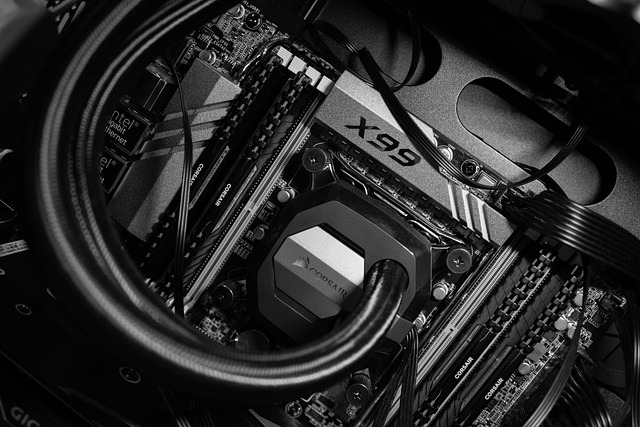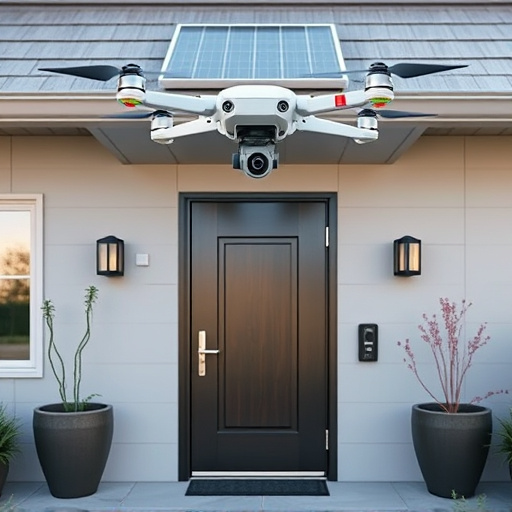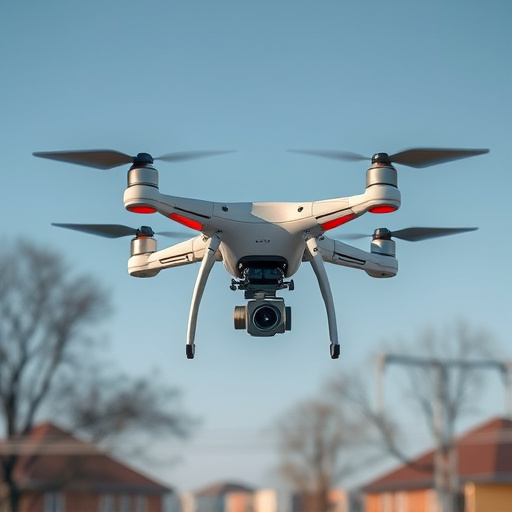Artificial Intelligence (AI) and Machine Learning (ML) are transforming home security with intelligent guard systems that leverage data analysis and algorithms for unprecedented accuracy in activity recognition, face detection, and pattern analysis. Emerging technologies powered by ML continuously learn and adapt to individual resident behaviors and potential threats, fostering proactive security measures. Despite implementation challenges like data privacy and algorithm bias, these innovations position AI/ML as game-changers in future home security, offering enhanced safety, peace of mind, and cutting-edge security solutions globally.
The future of home security is being revolutionized by a wave of innovative technologies. From AI and machine learning to smart home automation and advanced biometric systems, these cutting-edge security solutions are transforming the way we protect our living spaces. Explore how artificial intelligence enhances surveillance, smart home ecosystems offer holistic protection through device connectivity and voice control, and biometric technologies push the boundaries of access control with irreversible encryption. Discover these emerging trends and prepare for a future of enhanced security.
- AI and Machine Learning: The New Guard of Home Security
- – Exploring AI-driven surveillance systems
- – Benefits and challenges of machine learning in intrusion detection
AI and Machine Learning: The New Guard of Home Security

Artificial Intelligence (AI) and Machine Learning (ML) are revolutionizing home security, marking a significant shift in how we protect our spaces. These cutting-edge technologies offer innovative security solutions, transforming traditional systems into intelligent, adaptive guards. By leveraging vast data sets and advanced algorithms, AI-powered cameras, doorbells, and alarms can now analyze patterns, recognize faces, and detect unusual activities with unprecedented accuracy.
Emerging home protection technologies powered by ML continuously learn and evolve, adapting to the unique behaviors of residents and potential threats. This personalized approach enhances security technology advancements, ensuring that future home security measures are proactive rather than reactive. In light of these trends, the world of home security is poised for a transformative era, where AI and ML serve as the new guard, promising enhanced safety and peace of mind for homeowners worldwide.
– Exploring AI-driven surveillance systems

The future of home security is being reshaped by artificial intelligence (AI), which promises to revolutionize how we protect our spaces. AI-driven surveillance systems are emerging as cutting-edge security solutions, leveraging advanced algorithms and computer vision to monitor homes in ways never before possible. These innovative technologies can analyze live footage, detect unusual activities, and even predict potential threats, enhancing residential protection with unparalleled accuracy and efficiency.
With the aid of machine learning, these AI systems adapt over time, becoming more adept at distinguishing between genuine incidents and false alarms. This not only reduces the number of unnecessary alerts but also ensures that residents are notified promptly when actual security breaches occur. As we move forward into a world increasingly influenced by security technology advancements, AI-driven surveillance is poised to become a cornerstone of home protection, setting new standards for safety and peace of mind in our homes.
– Benefits and challenges of machine learning in intrusion detection

Machine learning (ML) is transforming the landscape of home security by offering sophisticated intrusion detection capabilities. One of its key benefits lies in its ability to analyze vast amounts of data from sensors, cameras, and other devices, enabling systems to recognize patterns and anomalies indicative of potential threats. This advanced analytics can lead to earlier detection of intruders, improved false positive rates, and more effective response strategies. ML algorithms can adapt and learn over time, becoming increasingly accurate and tailored to individual homes’ behaviors and environments.
However, implementing ML in home security also presents challenges. These include the need for substantial amounts of labeled training data, ensuring privacy and data security, and addressing potential bias in algorithms due to skewed datasets. Additionally, maintaining and updating these systems requires continuous learning and adaptation as new threats emerge, demanding significant technical expertise and resources. Nonetheless, ongoing advancements in ML are pushing the boundaries of what’s possible in emerging home protection solutions, positioning it as a game-changer in the future security trends and innovative security technologies space.






